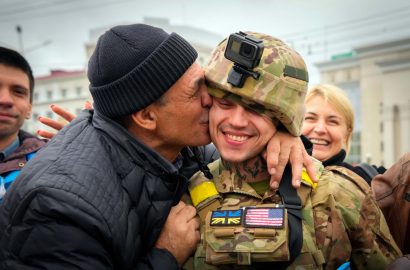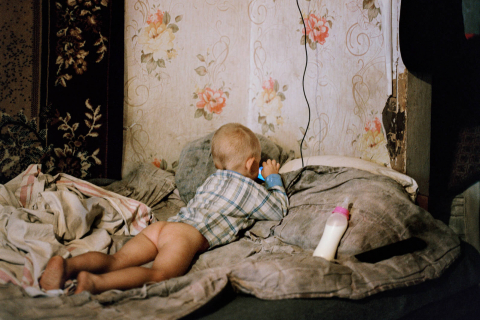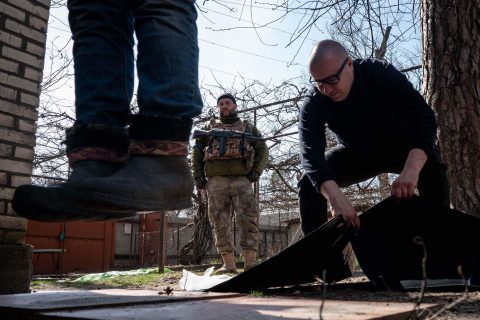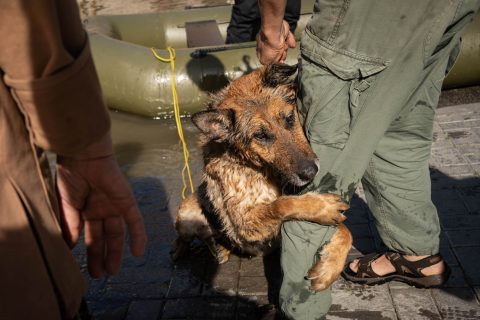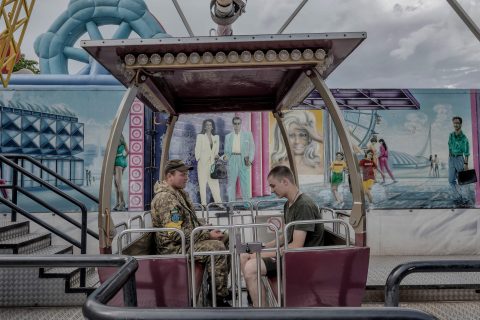
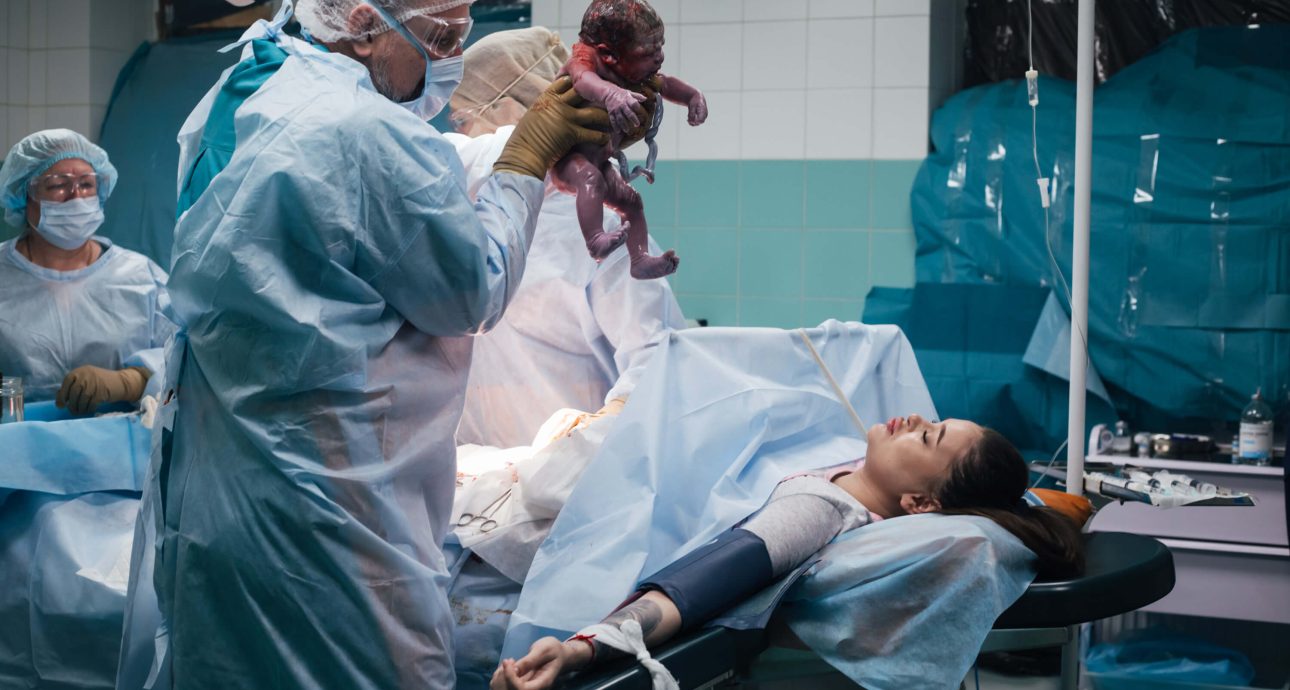
Ten Iconic Photos from the War by Anastasia Vlasova
Anastasiia Vlasova has been documenting significant events of the Russian-Ukrainian war since its very beginning: she captured the pseudo-referendum in Crimea, the site of the MH17 Malaysia Airlines plane crash, and ventured into the territories of the so-called LPR and DPR. Now, she is documenting the full-scale invasion, collaborating with numerous global media outlets, including The Guardian, The Washington Post, Der Spiegel, Los Angeles Times, as well as Getty Images photo agency. Anastasiia has selected 10 important photos and shared how the events and images of the war continue to impact her.
Farewell
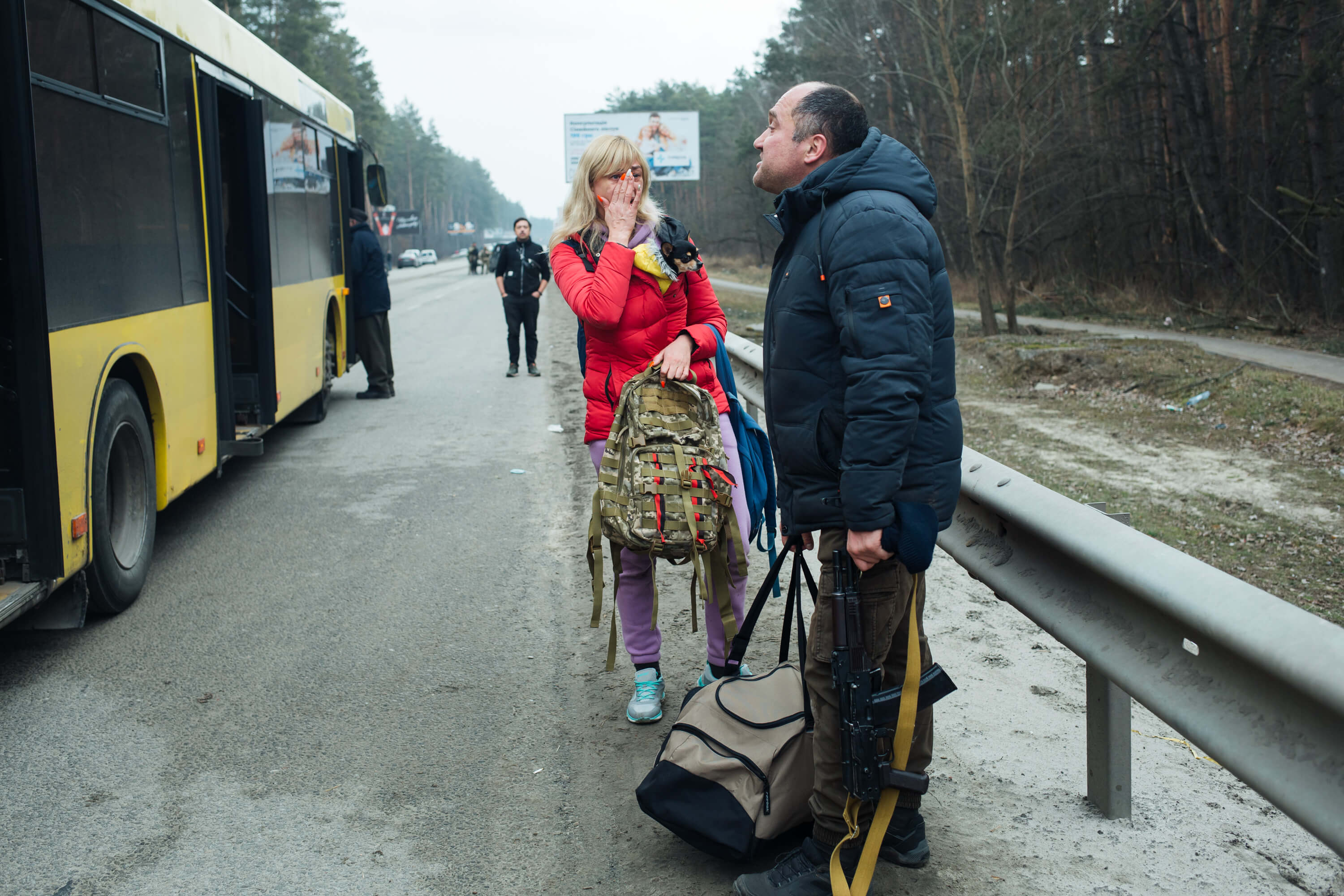
I took this photo on March 6th last year, when intense battles were already raging for Irpin and evacuations were ongoing. I still consider that day to be one of the most terrifying in my professional life.
The Russian artillery was working chaotically, and I always had the feeling that something would hit the evacuation buses any moment on the way. Eventually, it happened just like that – on that day, a family was killed by artillery shelling as they tried to escape the city.
What I like about this shot is that it’s like exposed nerves. There’s so much to read from it, like the despair of the woman who understands that she might be seeing her husband for the last time. But at the same time, she knows she must get on that bus and leave. And that little dog peeking out from her jacket doesn’t fit the war scene at all.
I enjoy studying the man and his vivid expression. It’s not hard to imagine that he’s telling his wife to go alone, without him, that he needs to stay since he’s armed.
This is not a unique situation. I believe many women and men went through similar painful farewells during the war. I am not an exception.
Lukyanivska
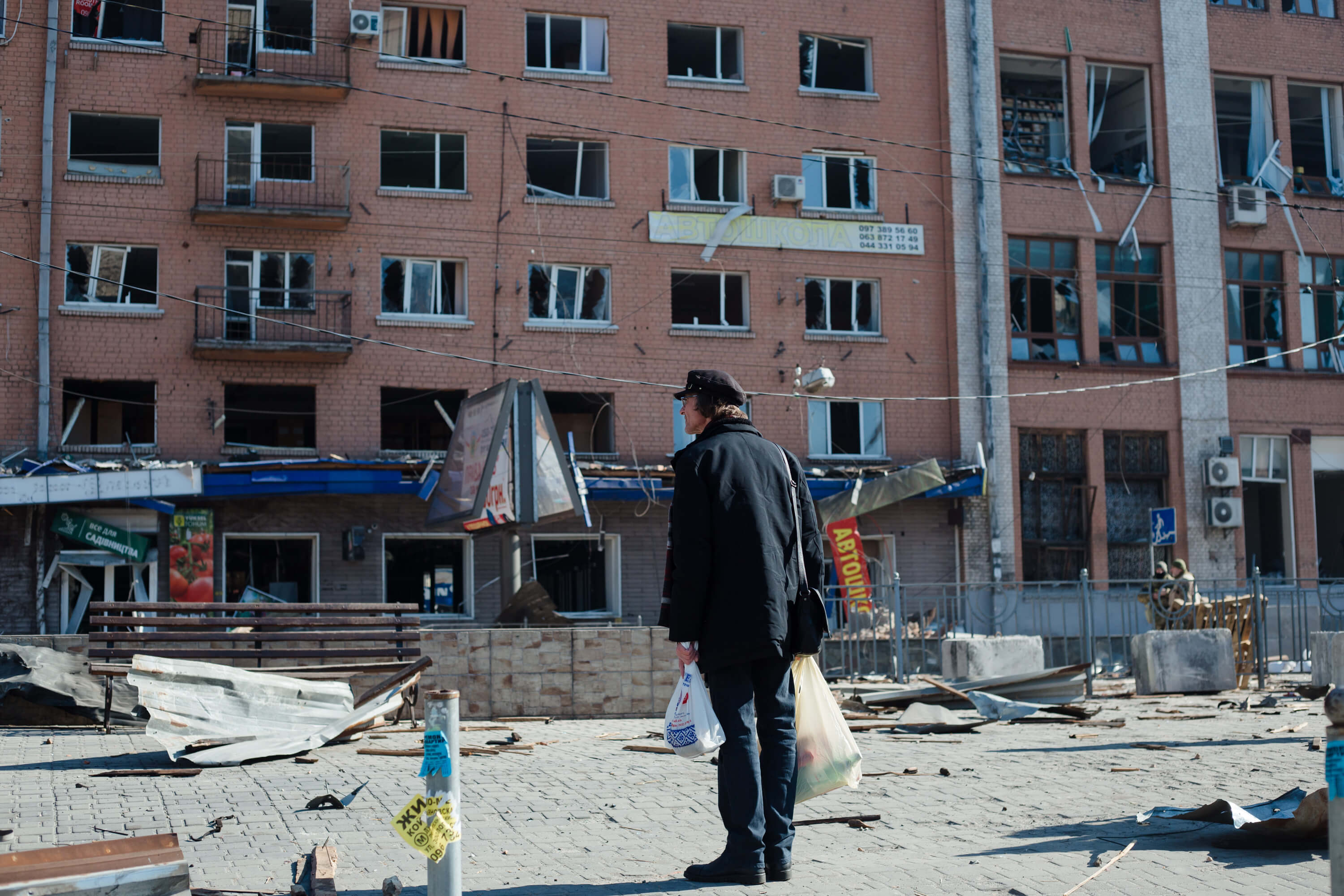
I was studying at the institute and living near Lukyanivska Square. I never really liked Lukyanivska Square itself: always crowded with people, stalls with pastries and shawarma, everyone rushing to catch the bus, and in winter, the street was always covered in ice that was never cleared.
But it’s “our” place. We used to go there with classmates after classes, sometimes grabbed a bite at McDonald’s, and then went our separate ways, some taking the metro, some catching a bus or trolleybus.
Seeing the war not in the East, but so close to my home, surroundings, and memories, was quite unusual.
Birth
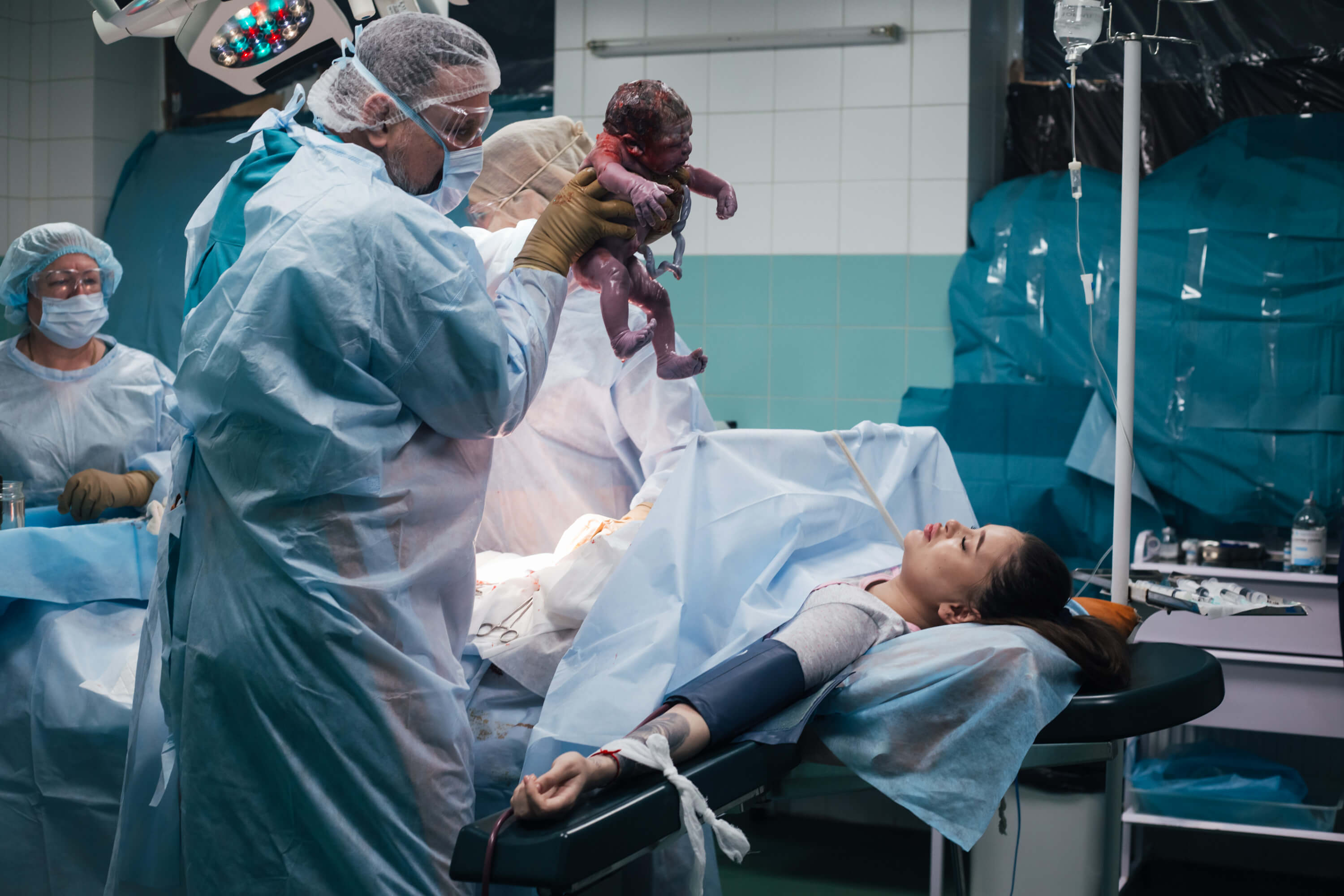
When the Russian army, defeated and humiliated, had already left the Kyiv region and there was a little time for calmer stories, I decided to photograph in the maternity ward.
I often encountered women with babies in basements and bomb shelters before, and the thought that someone might be giving birth to a child or running for cover while pregnant during shelling or attacks never left my mind.
The theme of birth is very intriguing to me. Perhaps it attracts me so much because I feel distant from it. It’s something grand and unfathomable, something that continues to amaze.
In the photo, the doctor shows Elizabeth her newborn son, her first child. It was a very powerful moment for me. Especially against the backdrop of us slowly learning about the horrors that the Russians were committing and continue to commit in the occupied territories at that time.
The grave of Ivan Shyrokyy
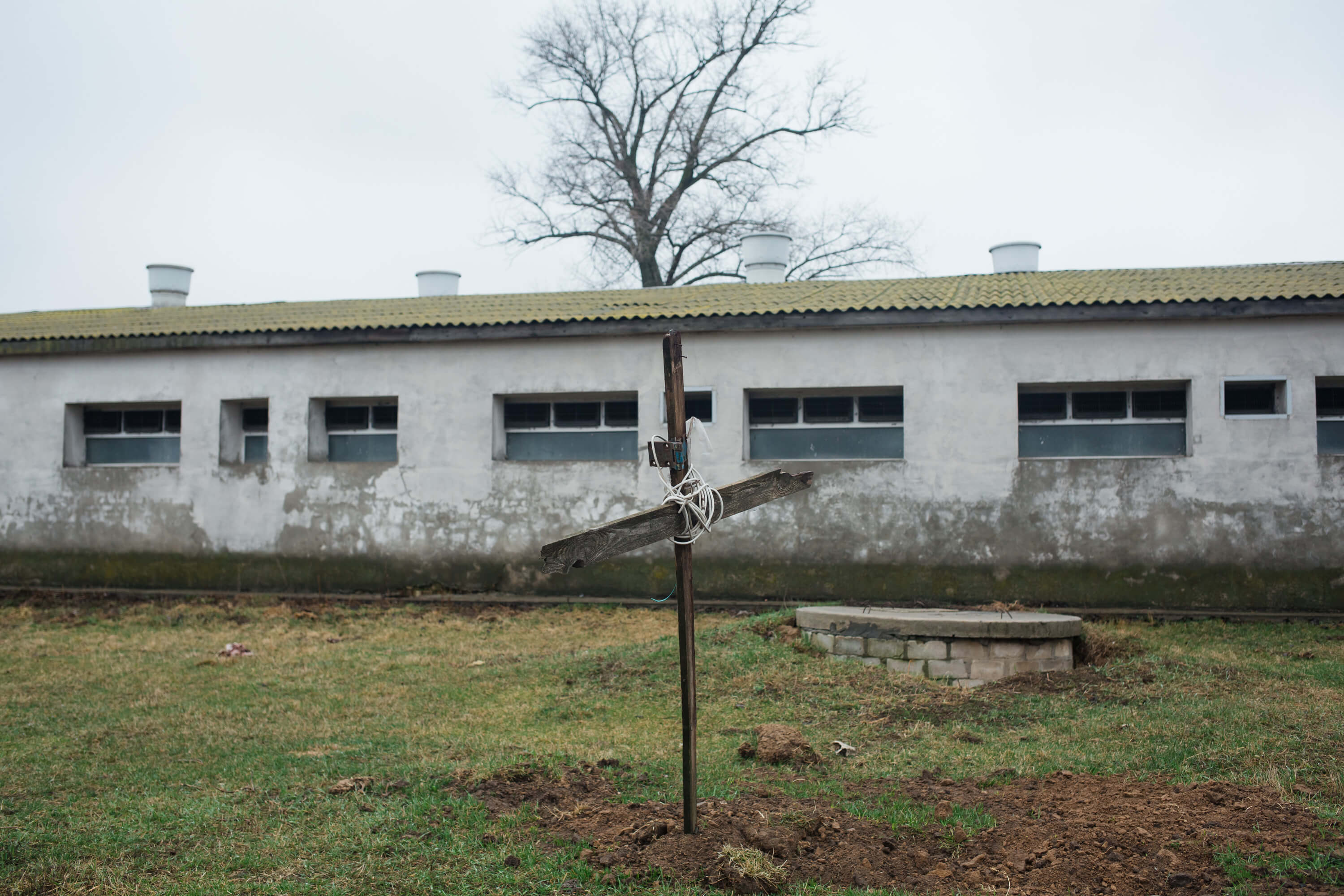
This was the first burial of Ukrainian by Russians I saw, and its story deeply impressed me.
This grave was located on the territory of a pig farm in the village of Svitilna, Kyiv region. Here, the Russians buried Ivan Shyrokyy, whom they killed on March 11th of last year, the first day they entered the village and took over the farm.
Ivan Shyrokyy worked as a guard and animal caretaker. The large territory and infrastructure of the farm perfectly suited as a base for the occupiers.
On the farm, we also saw numerous dead and exhausted pigs, as they were not being fed or given water. Their bodies lay and rotted here and there across the entire farm area. The smell was unbearable.
Many things struck me. Firstly, the fact that the Russian soldiers who shot the man also buried him themselves. They even erected this makeshift cross and wrote several times who was buried there, along with the date of death – on the cross and on the wall of the adjacent building, which didn’t make it into the frame. Perhaps with this kind of “care,” they were trying to somehow justify their actions. As if saying, “Look, we’re not monsters – we killed and buried him, and even made a cross!” I perceived this as a form of distinct cynicism.
I also thought about how they lived on this farm for several weeks, witnessing everything around them dying, decaying, and crumbling – people, animals, nature, buildings. Would they ever reflect on the fact that they brought nothing but death to our land?
Slavko
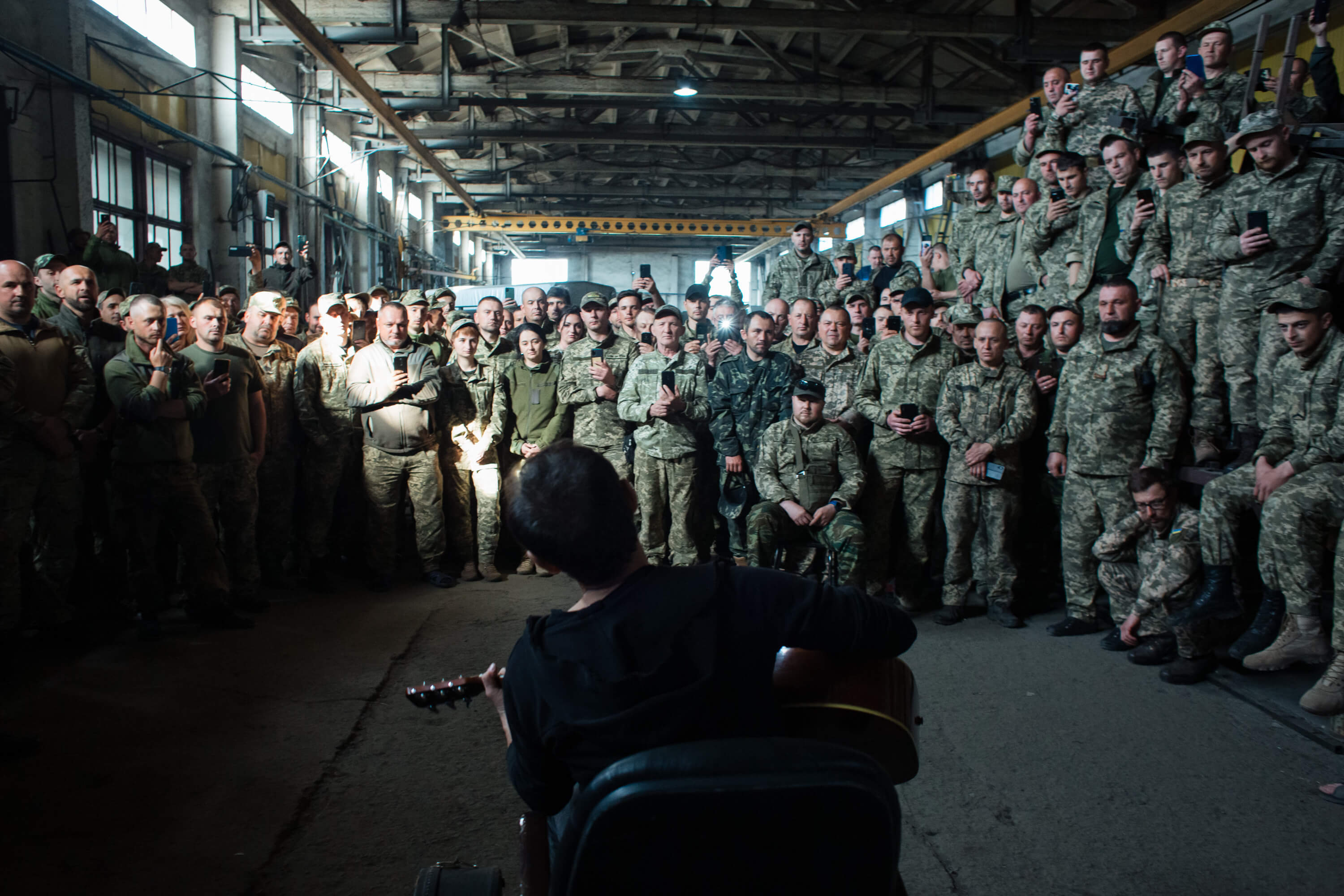
I’m not exactly a big fan of Vakarchuk. I like the old albums of “Okean Elzy,” and I can still occasionally listen to a few tracks from “Supersymmetry,” but I didn’t have any special excitement about shooting his concert. That is, until around a hundred soldiers gathered around him and he began to sing with his guitar.
He performed his new song about Mariupol, the anthem of the Sich Riflemen, and another folk song, less known to me. There were other songs too, but these resonated with me the most. It was the most genuine concert I have ever been to, one of those magical moments you feel instantly.
The soldiers were calling their wives and joking that they would envy them because at that moment Vakarchuk had canceled all of his civilian performances.
I believe that art should not be separate from politics, just as artists themselves shouldn’t be. Art should be for people and about people. Everything converged here.
Dead horse
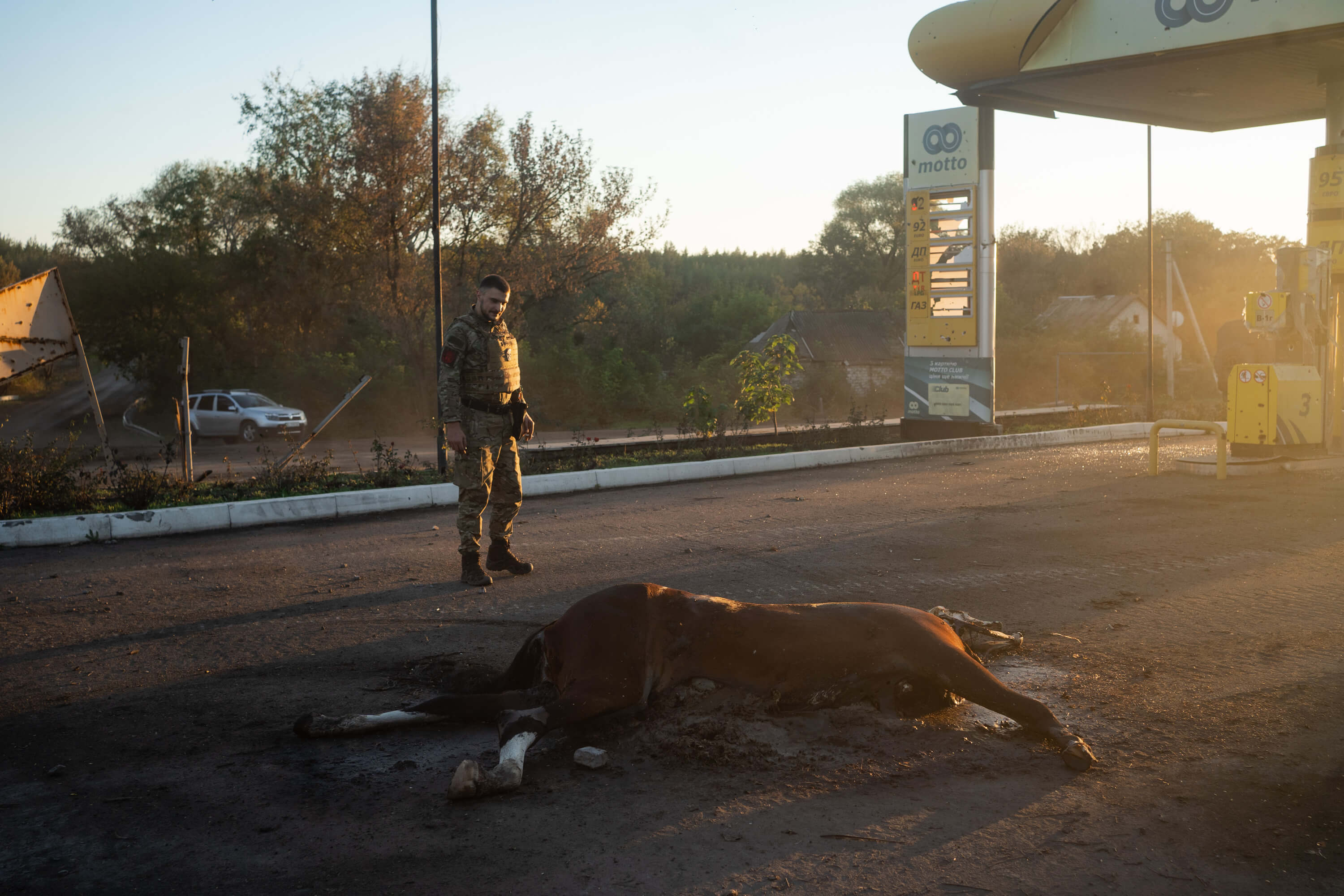
I took this photo near Izyum after the Kharkiv counteroffensive. I’m already accustomed to seeing dead human bodies or fragments. After photographing the site of the MH17 Boeing crash, I consider that I’ve seen the worst. But dead animals remain a painful subject for me – a symbol of vulnerability to human cruelty.
Horses have always fascinated me as something very beautiful, powerful, and noble. So it was particularly saddening to see this magnificent creature lying on the ground.
There was a sunset, and the light was simply enchanting. And even though almost all the villages we passed through had been somehow ravaged by the war, there was still a sense of rebirth, as these places were now liberated from the occupiers. And suddenly we saw a dead horse bathed in the same beautiful light – a counterpoint and a reminder of death’s presence.
A soldier drove by and stopped because he was curious about what we had found and were photographing. Most likely, he couldn’t understand why we were devoting so much time to a dead horse. And that’s fair, considering how many people were tortured and killed by the Russians in Izyum. But for us, unfortunately, it has become something familiar and expected in war.
New Year
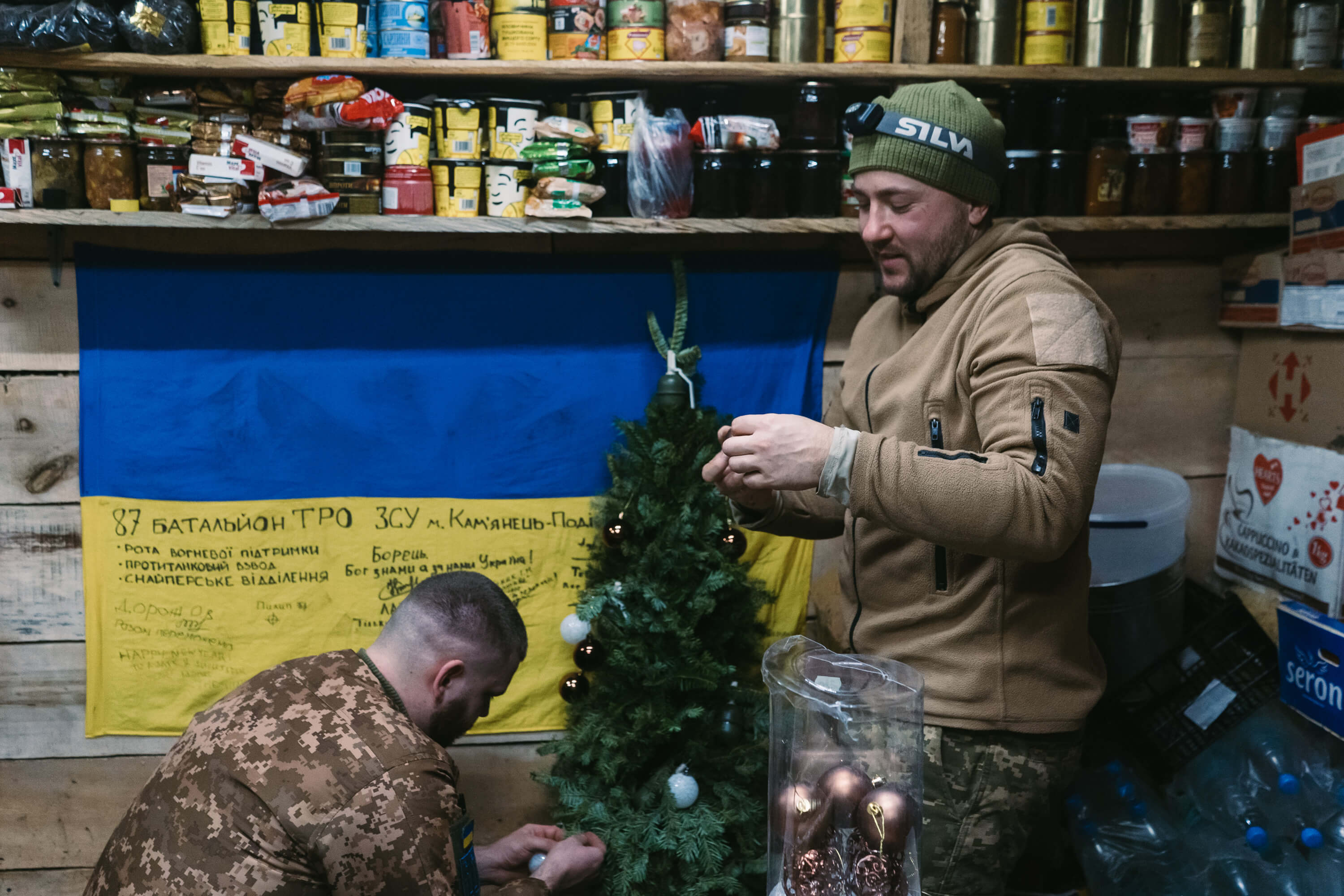
I love moments when everyone relaxes and doesn’t react as strongly to the presence of journalists and cameras, when relationships shift from “soldier – journalist” to “human – human.”
We spent several hours before New Year’s with the 87th TRO Battalion on the border with Russia in the Sumy region. Many jokes were made, conversations mostly revolved around family, we looked at their photos and memes about the demise of the Russian invaders. A nice summary of the year.
Death in the Living Room
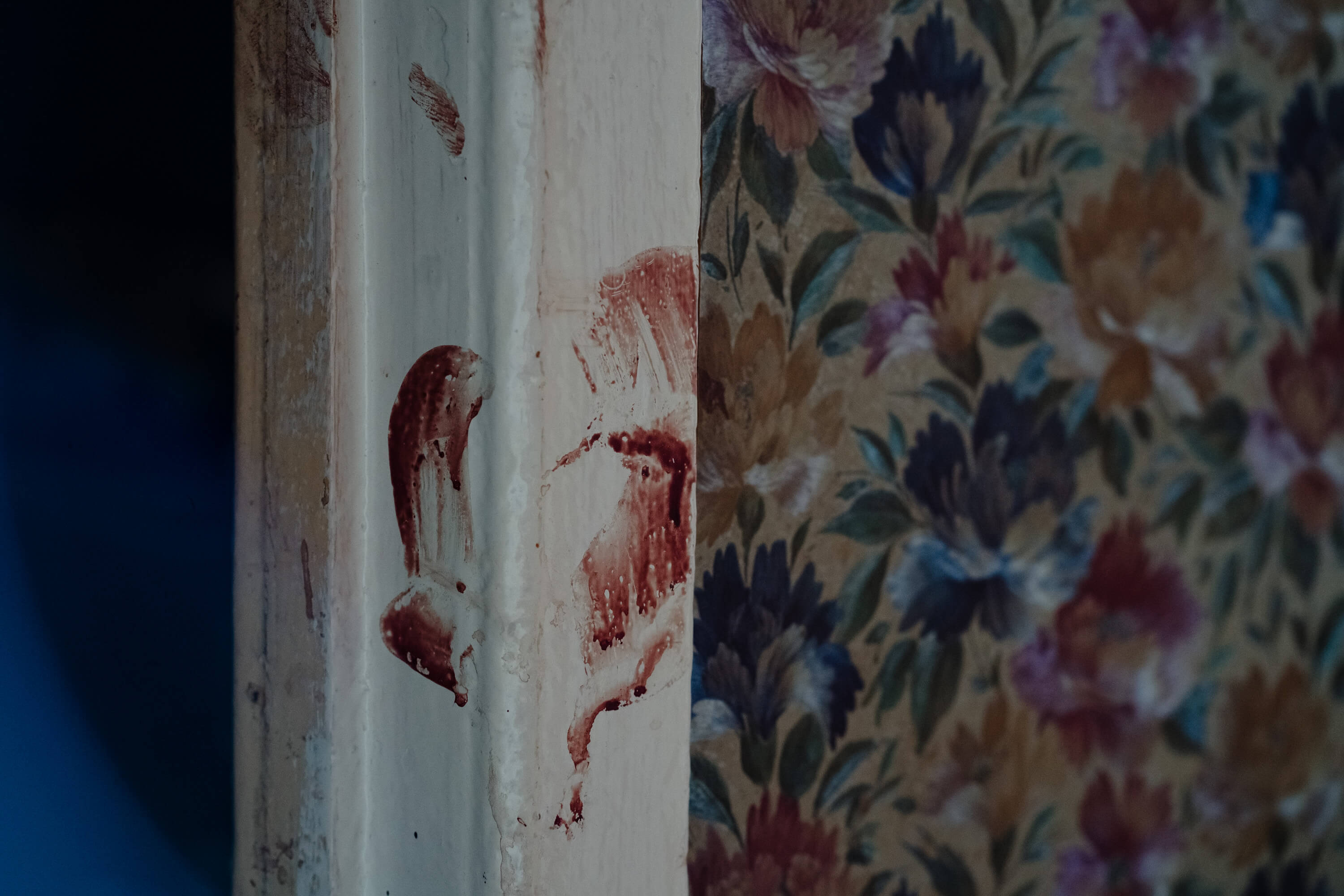
I have been documenting Russia’s war against our country since 2014, and I believe that there is very little that surprises me anymore in stories of human cruelty.
Throughout all the previous years of my work, I have not witnessed so many deaths of civilian people—right in their completely civilian rooms, amid soft furniture, indoor plants, and patterned wallpaper.
Death that occurred in the midst of quiet domestic comfort. Just like the enemy that invaded our land.
New Life
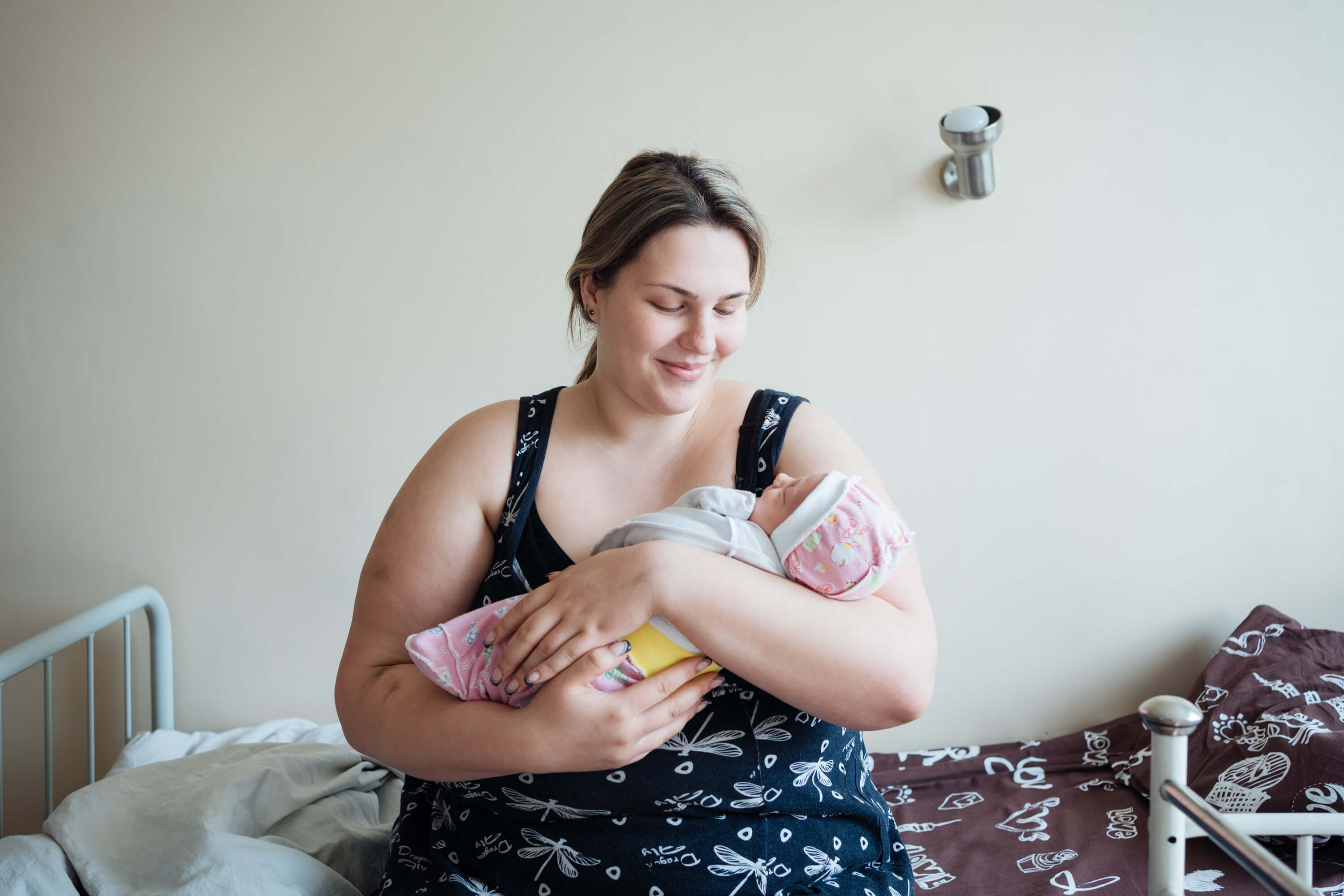
I believe that it’s important for people to remind themselves that life goes on even during war, so I visited a maternity hospital again, but this time in Myrnograd, Donetsk region.
I took this photo in spring 2023. It features Marina and her daughter Sofia, who was born just seven days ago. Sofia is Marina’s first and planned child.
I consider this a remarkable courage – to decide on having a child during times of instability, especially during war. “If we only focus on war, death, and horror, then what are we living for?” Marina said.
Toppled Tower
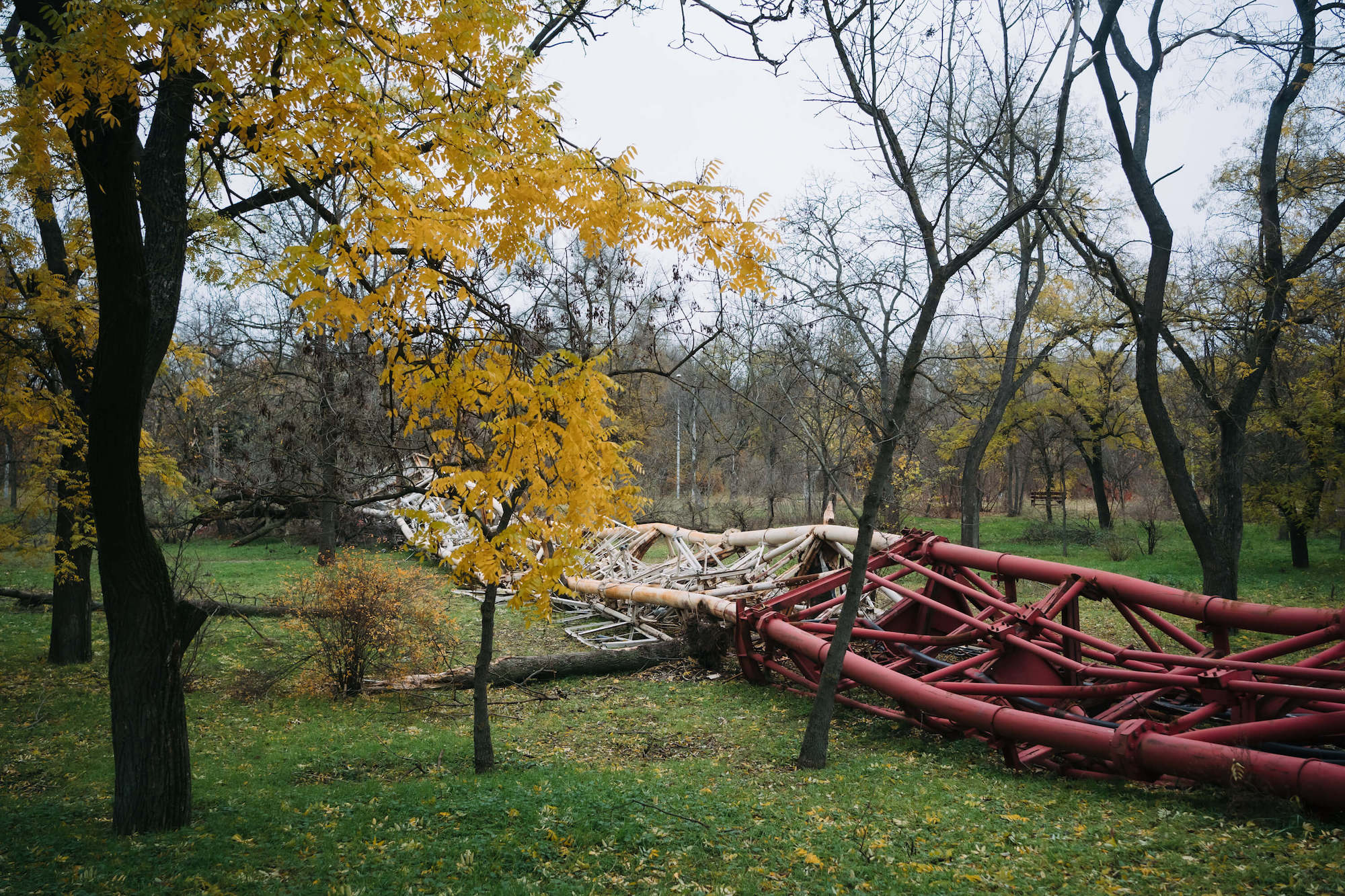
I was born and completed my schooling in Kherson. My parents survived the Russian occupation there, and they still live there.
The park where this tower stands is the park of my childhood, filled with many pleasant memories. We used to stroll there with my grandparents, I learned to rollerblade there, and later I walked my first dog in that park almost every day. I know every path there, and for me, it’s still the best park in the world.
This television tower resembles a fallen giant that has split the park in two. To me, it’s a visual symbol of the “before” and “after”.
This publication was created with the financial support of the European Union. The content of the publication is the sole responsibility of DW Akademie / MediaFit Program for Southern and Eastern Ukraine and does not necessarily reflect the views of the European Union.
Others project materials

New and best

